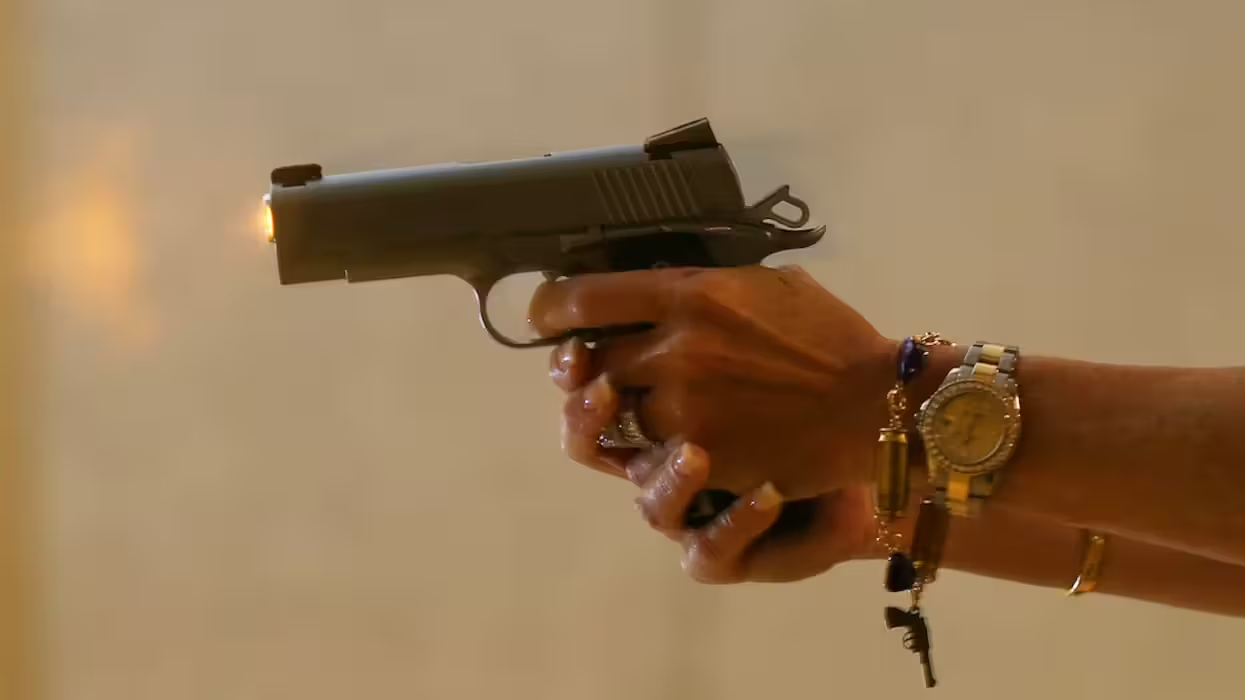© 2025 Blaze Media LLC. All rights reserved.
The 5 Biggest Differences Between Operation Fast and Furious and Operation Wide Receiver
June 26, 2012
Despite what the White House's "blame Bush" mantra would have you believe, differences exist.
Ever since the House Oversight and Government Reform Committee voted in favor of holding Attorney General Eric Holder in contempt last week, the Left has been conducting a public relations push to downplay operation "Fast and Furious" and convince Americans that the failed gunrunning initiative was actually started under former President George W. Bush under the name "Wide Receiver."
(Related: New MSNBC Host: 'I Don't Really Think' Fast and Furious Is a Scandal)
(Related: Reason's Nick Gillespie Blasts Rachel Maddow, Bill Maher Over Fast and Furious Partisanship)
The insinuation is that Fast and Furious is somehow a continuation of the Bush-era operation. The only problem with that theory is that it's not true.
Even White House Press Secretary Jay Carney last week attempted to shift the blame from Holder and the Obama administration and onto the Bush administration.
"Everything has been provided to -- congressional investigators and that is really the issue, isn't it? It is how did this operation come about. It originated in a field office during the previous administration. It was ended under this administration by this attorney general," Carney said during a presser last week.
But even the laziest of fact-checks would prove his assertion wrong.
In no way does that excuse the Bush administration from allowing a poorly-planned operation to proceed. However, the differences between the two operations are stark and should be considered.
(1) First and foremost, operation Wide Receiver did not result in the death of a U.S. Border Patrol agent or an Immigrations and Customs Enforcement (ICE) officer. Fast and Furious did. The guns that ultimately killed Border Patrol agent Brian Terry and ICE officer Jamie Zapata were traced back to straw purchasers related to Fast and Furious. Zapata's family filed a wrongful death suit against the U.S. Justice Department last week.
Further, officials have confirmed that the guns from Fast and Furious have already killed hundreds of Mexican citizens and Holder has said on the record that they will likely kill many more. The total number of confirmed deaths so far from Wide Receiver: Zero.
(2) Second, Wide Receiver, though flawed, was more of a gun-tracing operation than a gun-walking program. Gun-tracing involves putting specific safeguards in place to track firearms, such as RFID chips perhaps with video or aerial surveillance. Gun-walking is what happened in Fast and Furious, where ATF agents sold thousands of guns without a reliable way to recover them, apparently just hoping for the best.
Some of the guns from Wide Receiver were implanted with RFID chips and were actively tracked electronically. The Bureau of Alcohol, Tobacco, Firearms and Explosives (ATF) in Phoenix also implemented aerial surveillance tactics in an attempt to follow the weapons.
However, problems reportedly arose due to poorly implanted RFID chips which were forced into the guns, bending the antennas and decreasing their effectiveness. Cartels and straw purchasers also eventually came up with creative ways to shake tracking maneuvers and overhead surveillance, such as driving in loops for hours until surveillance planes had to refuel.
Those in charge of Fast and Furious took no similar steps to strengthen their chances of recovering walked guns other than recording the serial numbers before watching them disappear in the hands of Mexican drug cartels.
In fact, ATF agents involved in Fast and Furious have previously testified that they were ordered to stand down and not track the weapons even when interdiction was possible and instead "took notes" and let the guns walk across the Mexico border. Watch some of ATF whistleblower John Dodson's Congressional testimony:
(3) Third, one must take into account the size and scope of the operations.
Speaking to members of the Senate Judiciary Committee earlier this month, Holder said that "three hundred guns" were allowed to "walk" (although note the difference between "tracing" and "walking" above) in Wide Receiver. While there is no evidence that suggests otherwise, the figure is dwarfed by the approximately 2,000 firearms that walked in Fast and Furious. Roughly 1,400 guns were lost and about 700 have been recovered in Mexico and at crime scenes like the sites of Terry and Zapata's murders.
(4) Perhaps the most convincing piece of evidence proving the two operations are separate from each other is the fact that Wide Receiver was shut down in 2007 shortly after it was clear the program was a failure. This was before Obama was even in office and nearly two years before Fast and Furious began.
Fast and Furious wasn't shut down until late 2010 after the deaths of hundreds of Mexicans, a border agent and an ICE officer.
(5) Finally, unlike Fast and Furious, officials involved in Wide Receiver were reportedly in close contact with Mexican authorities during the operation, though how involved Mexican officials were is not entirely known.
What is known is that Mexican authorities were kept completely in the dark during Fast and Furious, according to the Mexican ambassador to the U.S. Mexico. He announced on June 1, 2012, that Mexico would be launching its own probe into Fast and Furious.
It should be perfectly clear that both the Bush and Obama administration conducted two separate, flawed operations. One, however, was a much deadlier and larger operation.
If there is evidence of wrongdoing, or false testimony related to operation Wide Receiver, those responsible should be held accountable. But the argument that Fast and Furious is all about "politics" and should just be swept under the rug because the previous administration also carried out a similar program is irresponsible.
A contempt resolution will be considered by the full House of Representatives this week. If lawmakers decide to hold the attorney general in contempt, it will be a first in U.S. history for a sitting attorney general.
Want to leave a tip?
We answer to you. Help keep our content free of advertisers and big tech censorship by leaving a tip today.
Want to join the conversation?
Already a subscriber?
more stories
Sign up for the Blaze newsletter
By signing up, you agree to our Privacy Policy and Terms of Use, and agree to receive content that may sometimes include advertisements. You may opt out at any time.
Related Content
© 2025 Blaze Media LLC. All rights reserved.
Get the stories that matter most delivered directly to your inbox.
By signing up, you agree to our Privacy Policy and Terms of Use, and agree to receive content that may sometimes include advertisements. You may opt out at any time.







